Best acoustic guitar pedals 2025: essential pedals to transform your acoustic tone and boost creativity
Our guide to the best acoustic guitar pedals for creativity, great live tone and banishing feedback, with top picks from the likes of LR Baggs, Fishman and MXR
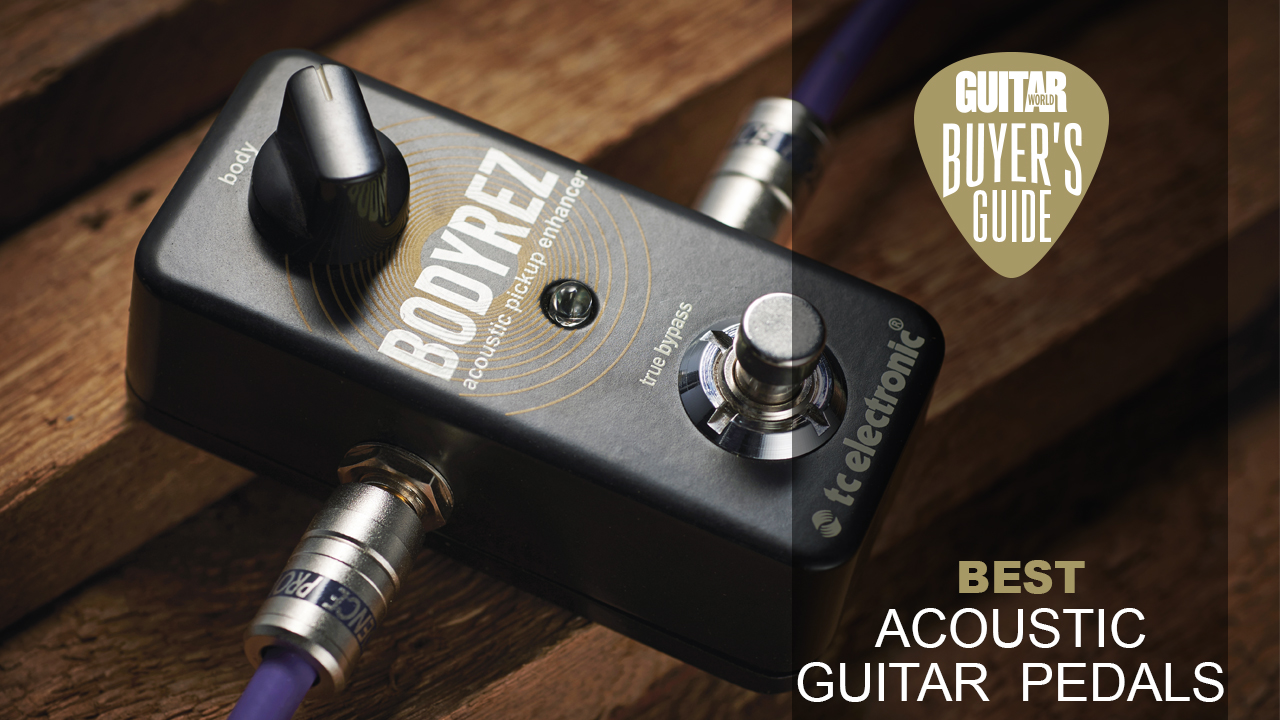
The best acoustic guitar pedals are designed to transform your tone. Hey, we know acoustic guitarists love to wax lyrical about purity – the unadulterated sound of flesh ’n’ fingernail against phosphor bronze strings, the sonorous vibrations of a fine rosewood body, and the tactile responsiveness of an ebony fretboard. Just you and your acoustic guitar is one of life's great pleasures, isn't it?
However, there's a time and a place for everything, and that includes acoustic guitar pedals. That place could be a live stage, a time when all you can summon from your guitar is horrific feedback. Or it could be a time when creativity has deserted you and you need to inject a spark back into your playing.
Whatever the reason or scenario, the best acoustic guitar pedals are here to help. Whether they're technical in nature – DI, EQ, Preamp – to overcome issues with your live sound, or more creative – reverb, tremolo, looper – to summon originality, depends on your circumstances. Whatever you do, don't make the mistake of dismissing them as inappropriate, as even when they're not essential they can still be good fun. Let’s take a look at our top picks now…
Best acoustic guitar pedals: Our top picks
If you're plugging in often and playing at volume, then it's no exaggeration to claim that our first recommendation is a life-changing acoustic guitar pedal. The LR Baggs Venue DI fixes so many issues – impedance mismatches, feedback, poor tone, noise, lack of gain, tuning – that it's an essential bit of kit for the gigging acoustic guitarist.
To have all these tools in one discreet package is a godsend, and it’s so intuitive to use too. This is hands-down the best acoustic guitar pedal you can find right now, and rightly so.
Our second recommendation is a completely different beast but it shares one important attribute: ease of use. Where other loopers can be extraordinarily fiddly to operate, the TC Electronic Ditto X2 is a masterclass in simplicity. It's not exactly bursting with features, but it has more than enough options to keep us happy. Tremendously fun to use, the Electronic Ditto X2 is also a very effective practice tool.
Best acoustic guitar pedals: Product guide
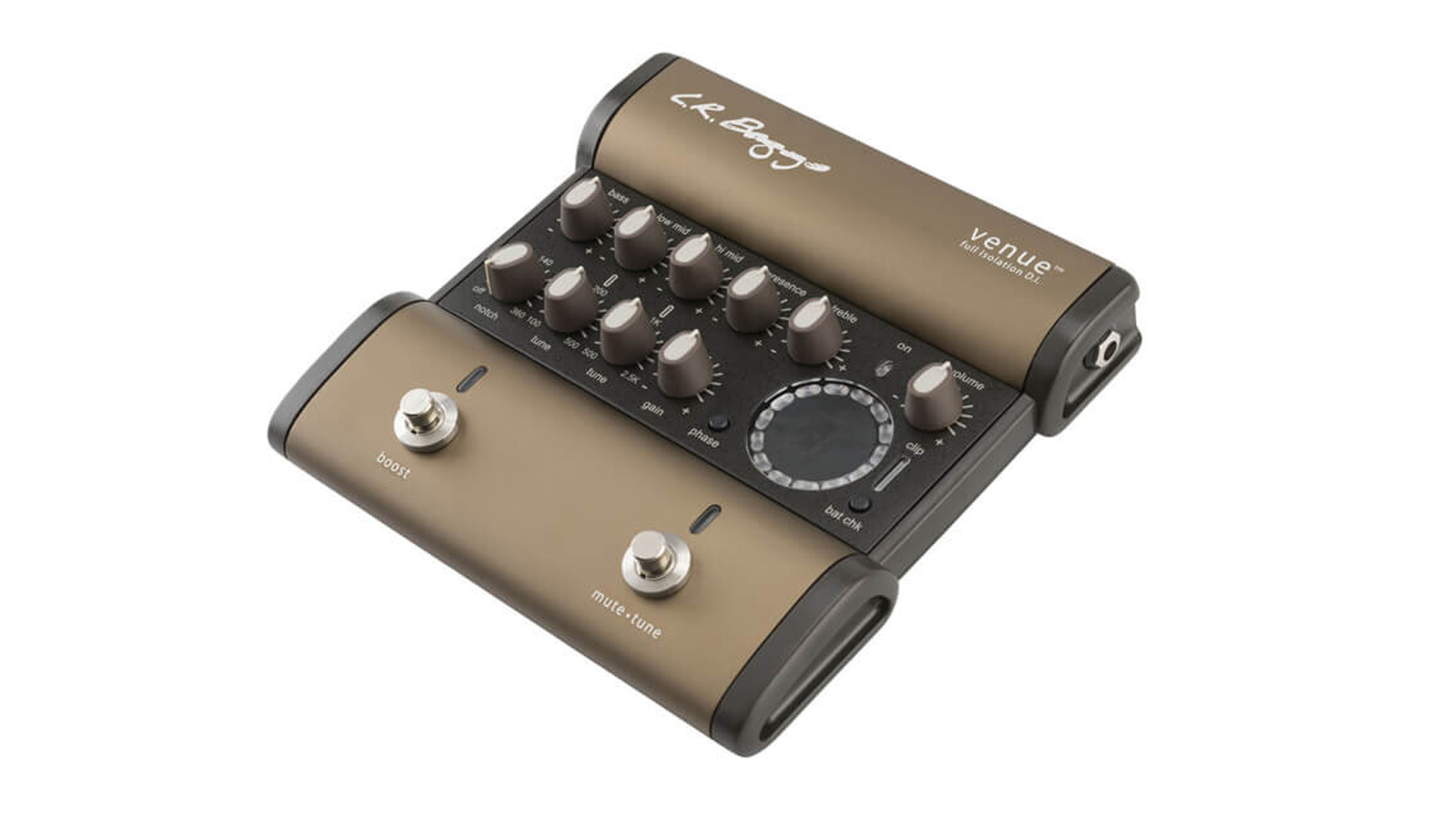
1. LR Baggs Venue DI
Our expert review:
Specifications
Reasons to buy
Reasons to avoid
Performing live as an acoustic player is fraught with potential issues – being agile enough to dodge the missiles the audience is throwing at you is the very least of them. Then as soon as you plug in, your guitar tone abandons you while howling feedback follows you everywhere.
Sounds familiar? Fortunately, there's a whole arsenal of tech that can help in these situations, and good ol' LR Baggs has shoehorned most of it into one very useful little box, the LR Baggs Venue DI.
This highly rated acoustic guitar pedal features a DI to overcome any impedance mismatches, as well as a five-band EQ to recover lost tone or dial out frequencies that are causing feedback. Speaking of which, the Venue also brings a notch filter and a phase switch to the fight.
The preamp provides plenty of adjustable gain for either passive or active pups, and there's a clean boost switch for solos or any other time you need to increase volume. Finally, there's a full chromatic guitar tuner with footswitch mute.
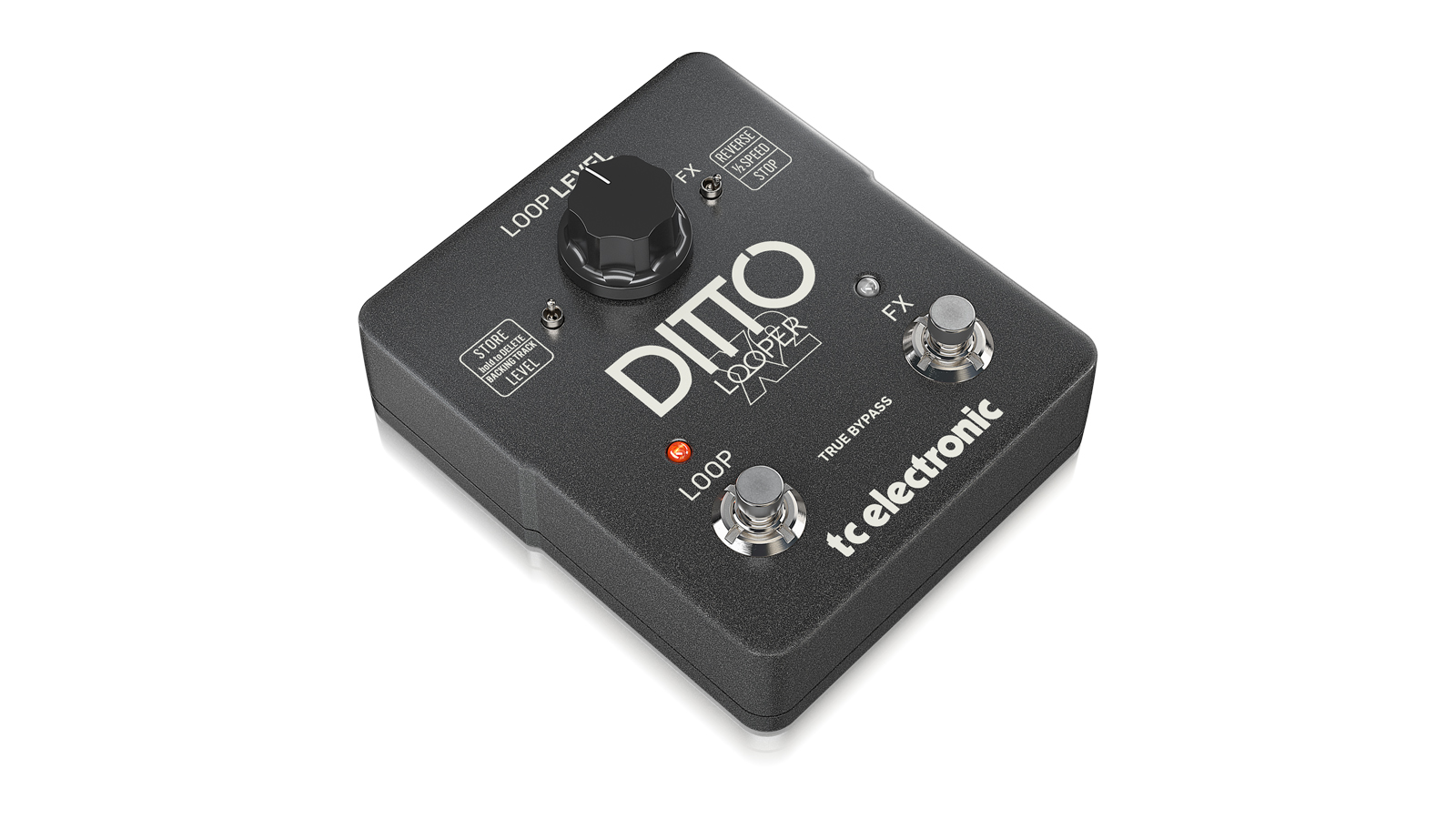
2. TC Electronic Ditto X2 Looper Pedal
Our expert review:
Specifications
Reasons to buy
Reasons to avoid
Loopers are great fun and make very useful practice tools. However, they can also feel so complex that using them just becomes too much like hard work, leaving them sitting in the corner to collect dust.
In our opinion, the Ditto X2 offers up the best balance of usability and functionality. There are no digital displays or hidden menus on this acoustic guitar pedal, so every feature is just a twist, flick or click away.
You get five minutes of looping time, with unlimited overdubs and undo/redo, and your loops will be stored even when the Ditto has been turned off. There's a dedicated stop-switch too, to help you perform with precision – recommended with a looper!
Reverse and ½ Speed are the only two onboard effects, but the Ditto X2 can also be fed backing tracks from a computer and vice versa, so there's plenty of scope for creative experimentation.
Read the full TC Electronic Ditto X2 Looper pedal review
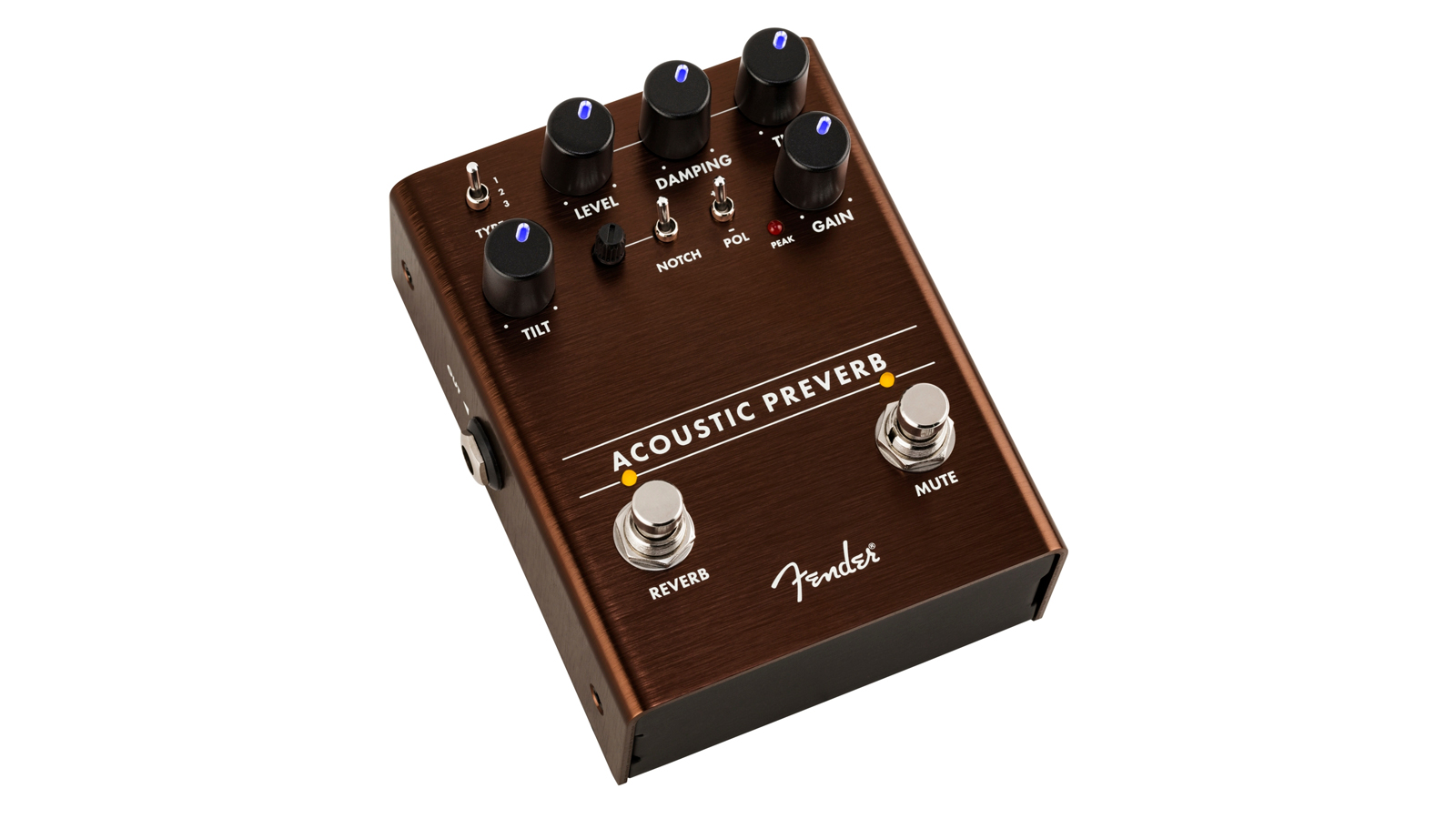
3. Fender Acoustic Preverb
Our expert review:
Specifications
Reasons to buy
Reasons to avoid
The Preverb is a pedal from Fender that combines a preamp and reverb. See what they did there? There are three reverb presets that can be shaped further with the level, damping and time controls. Fender doesn't say as much, but they sound like large hall, room and plate to us.
Fender does say that it has custom-voiced all three for acoustic guitar, and that they're able to provide optimal tone when played through full-range devices such as PAs and acoustic amps.
Passive pickups will almost certainly benefit from the uplift in gain that the Preverb's preamp can provide. EQ settings, in the guise of the Tilt control, are quite basic but they will help you to fill out your tone or remove feedback-inducing frequencies. Feedback can also be controlled with the notch filter and phase switch.
The Preverb only does a few things, but it does them very well, which is why it sits highly in our best acoustic guitar pedals guide. The reverb sounds expansively characterful, and the preamp will prove useful for guitarists with passive pups.
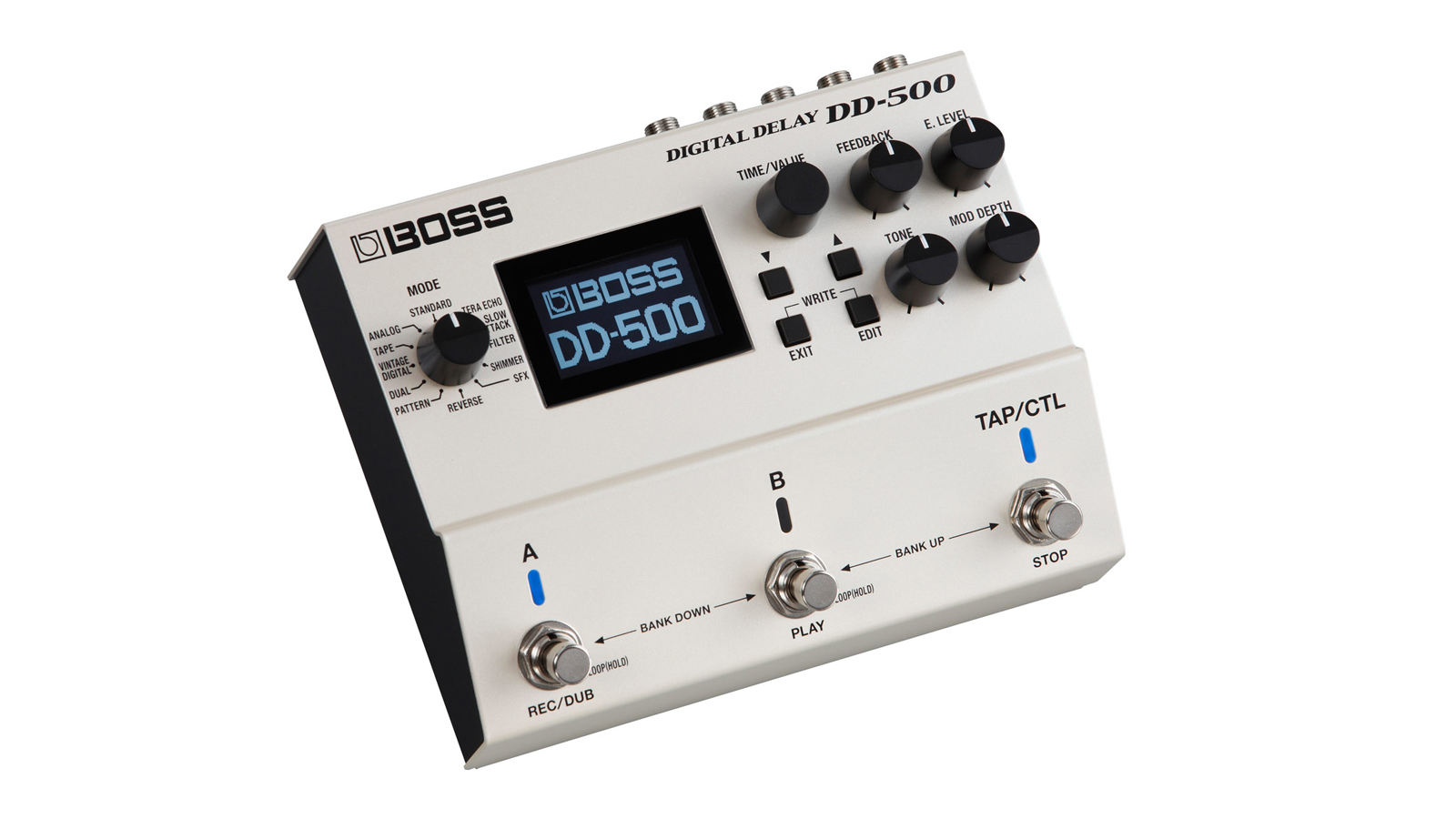
4. Boss DD-500
Our expert review:
Specifications
Reasons to buy
Reasons to avoid
Where to start with this one? The Boss DD-500 offers many creative delay options, from warm vintage to pristine modern tones and everything in between. There are 12 delay engines to choose from, and all are worth experimenting with. Our favorites for acoustic guitar include the pristine clean digital, the vintage tape, vintage digital, slow attack, tera echo and the heavenly shimmer.
Unusually, each delay type can be further tweaked with a semi-parametric four-band EQ, and you can also apply varying amounts of modulation. Honestly, it's easy to get lost for hours playing this thing.
If all that sounds a bit complicated then don't worry. The DD-500 is extremely powerful, but once you've orientated yourself with the basic controls it's not nearly as daunting to use as it looks. You can also hook it up to a computer to use its excellent software editor, or take advantage of the extensive MIDI implementation.
Sound quality is first class, with 32-bit AD/DA and 32-bit/96 kHz processing, analogue pass-through and a choice of buffered- or true-bypass. Oh, and it offers similar functionality to Strymon's legendary Timeline delay but for a cheaper price.
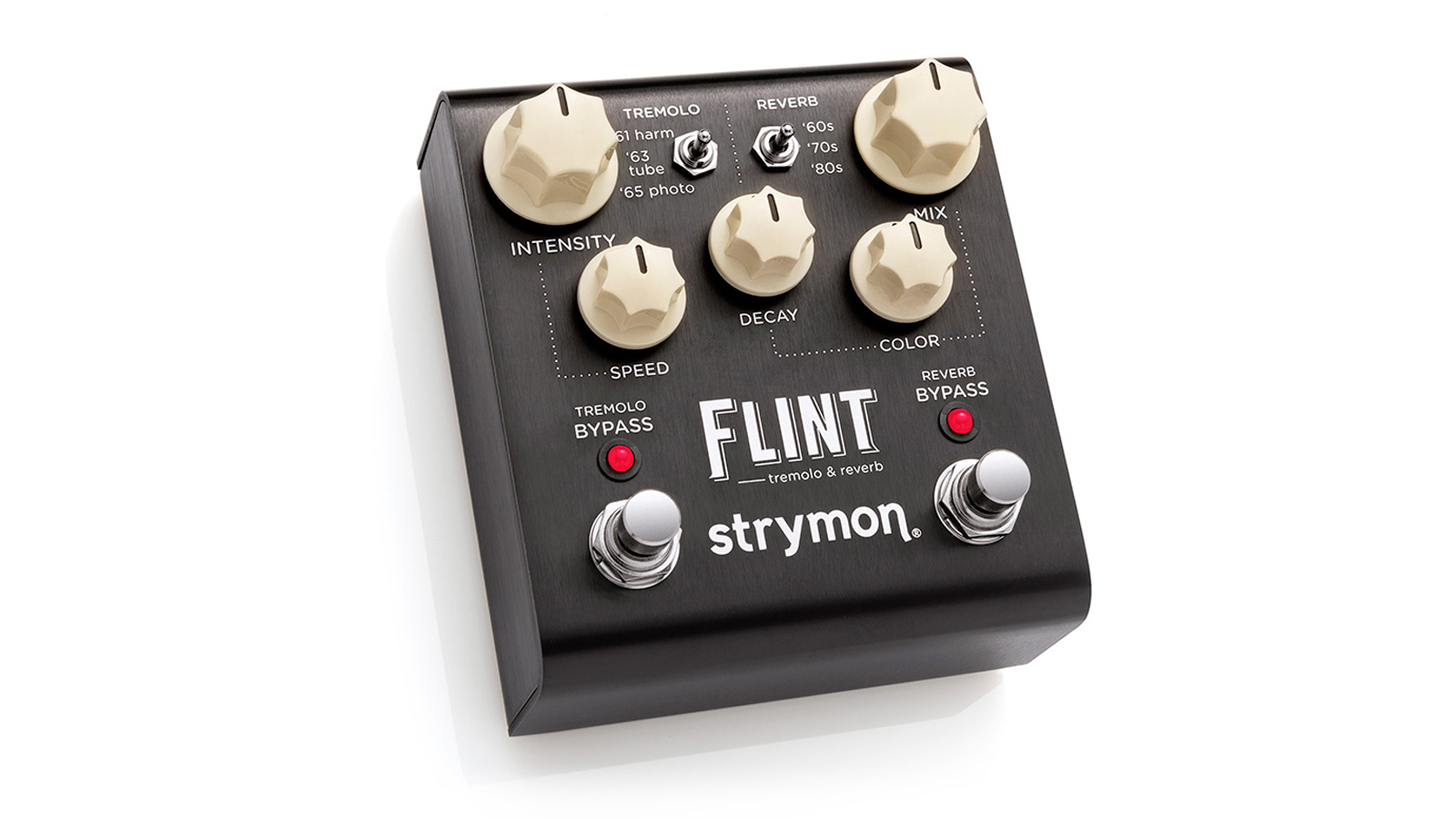
5. Strymon Flint Tremolo and Reverb
Our expert review:
Specifications
Reasons to buy
Reasons to avoid
Some pairings are just made for each other – red wine and chocolate, caramel and sea salt, tomato and mozzarella… Well, reverb and tremolo should be on that list too. Recognizing this, Strymon has brought us the Flint pedal, combining reverb and tremolo in a single unit.
Like many things guitar, these effects really took off in the ’50s (tremolo) and ’60s (reverb), which is why Strymon has served up half a dozen vintage flavors here. For reverb we get ’60s Spring Tank, ’70s Electronic Plate and ’80s Hall Rack, while the tremolo types are ’61 Harmonic, ’63 Power Tube and ’65 Photocell.
In essence, this means that the tremolo effect can roam from soothing to saturated to hard, while reverb goes from classic spring to densely reflected hall. If you're accustomed to the high quality of Strymon tones, then this acoustic guitar pedal won't disappoint.
We suspect that most acoustic guitar players will want to use a slow, smooth tremolo to add ambient depth to their sound, but the Flint is a gorgeous pedal to experiment with, so don't stop there.
Operation of the primary controls couldn't be easier but, like a few other Strymon pedals, adjusting the secondary functions is a bit of a faff. It's worth the trouble though, as combining the two effects is just lush.
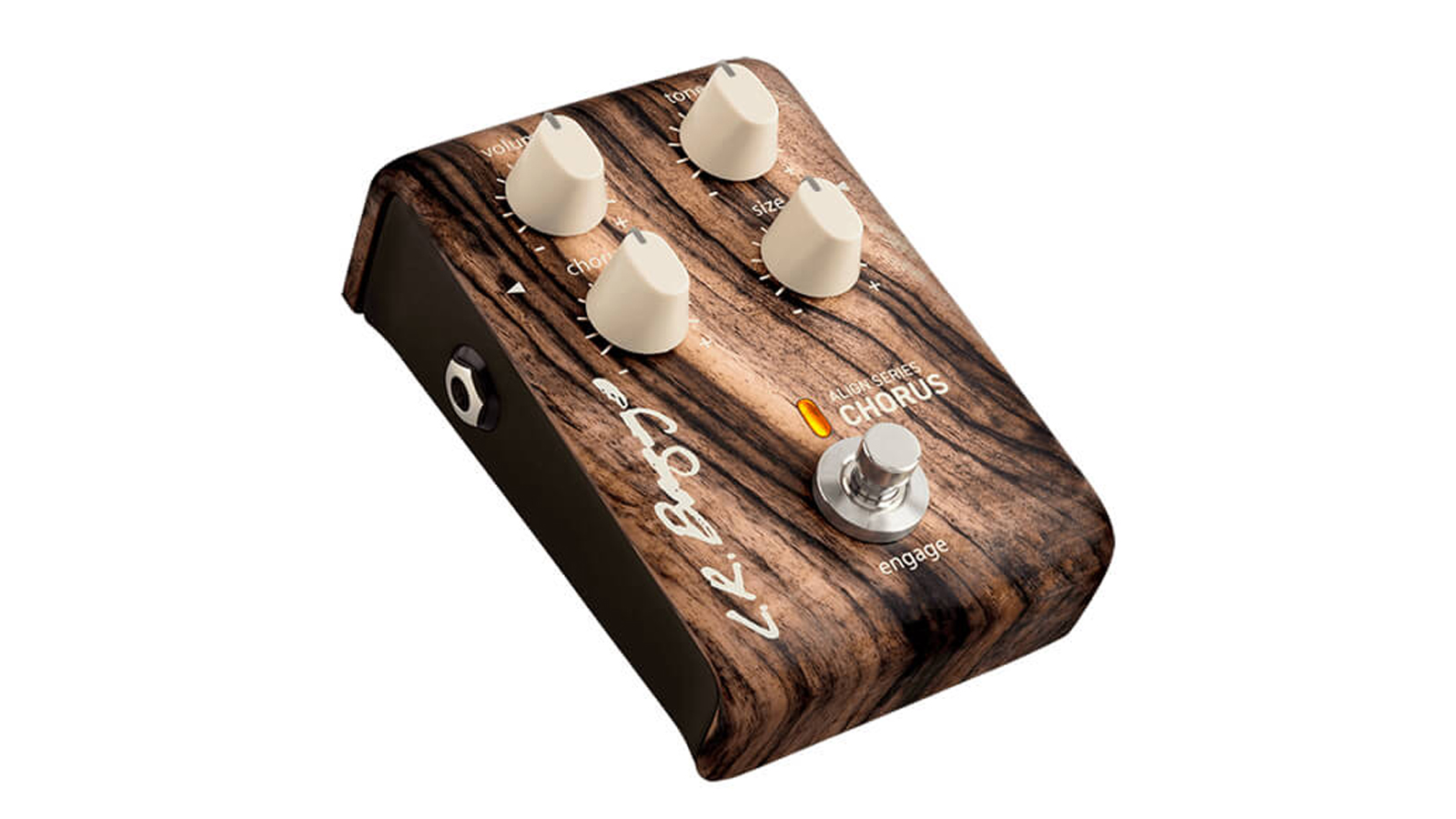
6. LR Baggs Align Chorus Pedal
Our expert review:
Specifications
Reasons to buy
Reasons to avoid
LR Baggs has voiced its Align chorus pedal to suit the 'less is more' crowd. So if your idea of choral heaven is subtle tones that massage your sound with depth, while simultaneously showering it with celestial ambiance, then this is the best acoustic guitar pedal for you.
It’s very easy to sculpt a great acoustic sound from the LR Baggs Align Chorus Pedal. The chorus knob acts like a wet/dry control, so you can dial in as much of the effect as you like while keeping your original guitar tone intact.
The size knob changes the intensity of the chorus from very subtle to subtly unsubtle. Turning it clockwise intensifies the way in which two chorus voices interact; it’s a little like adding more instruments to the mix. All very usable tones.
The tone knob only affects the wet sound, leaving your original guitar tone pristine, but the volume knob does change the overall volume, meaning this pedal can also be used as a slight boost.
LR Baggs has developed an entire range of effects boxes under the Align banner, all voiced for acoustic guitar. They’re well worth checking out.
Read our full LR Baggs Align Chorus Pedal review
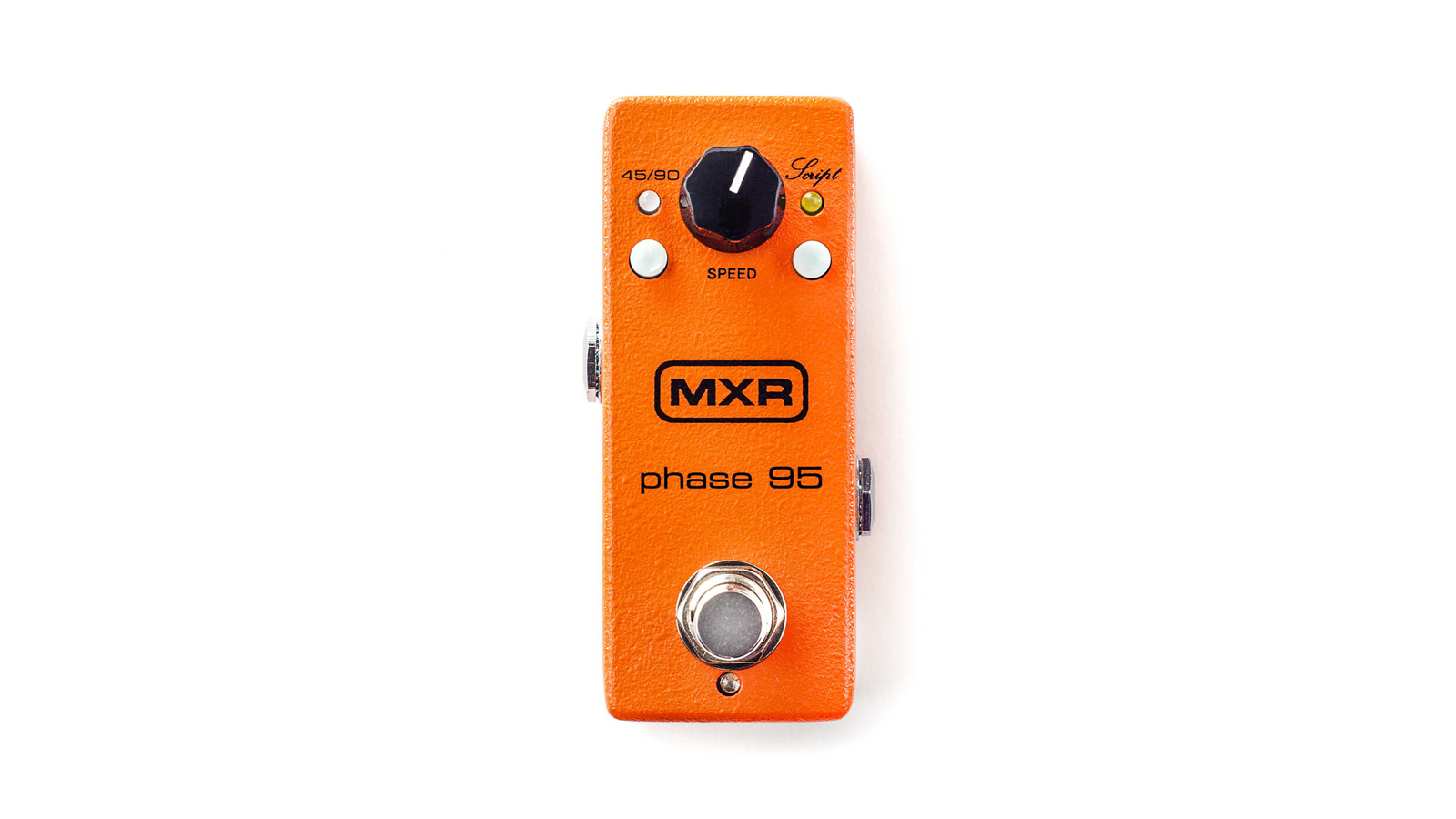
7. MXR Phase 95
Our expert review:
Specifications
Reasons to buy
Reasons to avoid
Here you get two classic MXR phaser pedals for little more than the price of one. A no brainer, right? The MXR Phase 95 combines two very popular phase effects boxes in one tiny enclosure: the Phase 90 and Phase 45.
The Phase 90 is MXR's four-stage phaser capable of some very intense, deep phase tones. It's definitely useful to have on your pedalboard, but of more interest to acoustic guitar players is the two-stage Phase 45, which sounds mellower and more syrupy. With the Script voicing switch engaged, it enhances the effect further, producing warm and lush uni-vibe-like swirls.
Apart from the 45/90 selector and Script voicing switch, there's only the speed control for you to play with so it couldn't be easier to use. Why not just buy a Phase 45? Frankly, having the additional Phase 90 bolsters your sound palette for the cost of a cup of coffee and some cookies. It would be silly not to.
Read our full MXR Phase 95 review
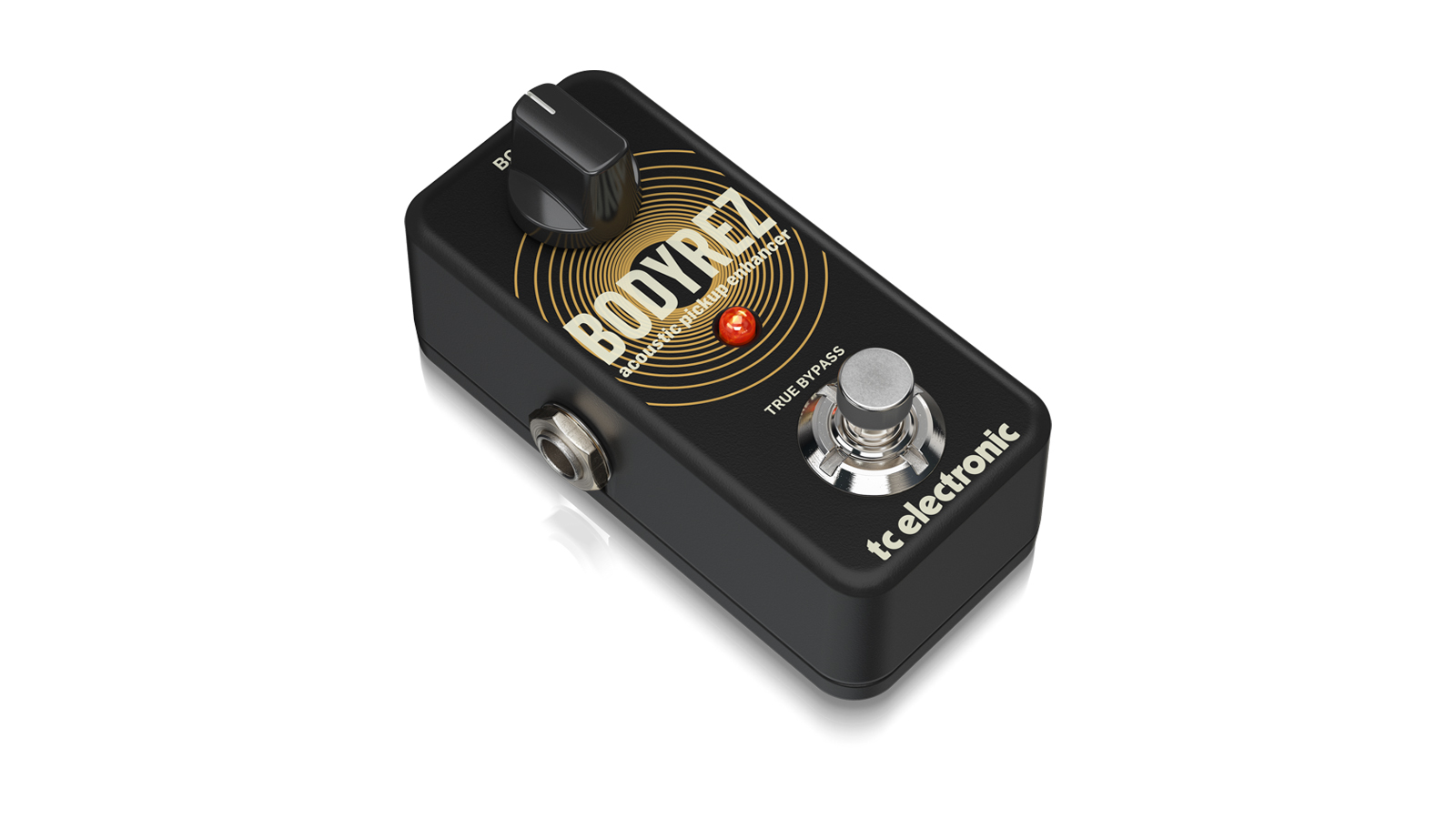
8. TC Electronic BodyRez
Our expert review:
Specifications
Reasons to buy
Reasons to avoid
Unfortunately, under-saddle piezo pickups are known for their tone-sapping qualities. Unplugged, your acoustic tone sounds rich and warm with a sparkly top end, but as soon as you're hooked up to an amp or PA you're left with a thin, quacky, synthetic sound that's barely a shadow of its former self.
The BodyRez aims to restore your lost tone through the clever application of EQ filters and compression. This is all accomplished 'under the hood', so all you have to do is twist the big black Body knob until the right amount of tone is restored. Surprisingly, despite its diminutive size and simple controls, it works very well.
There's also a phase control to kill low-frequency feedback. If you’re looking for one of the best acoustic guitar pedals for breathing new life back into your tone, here it is.
Read our full TC Electronic BodyRez review
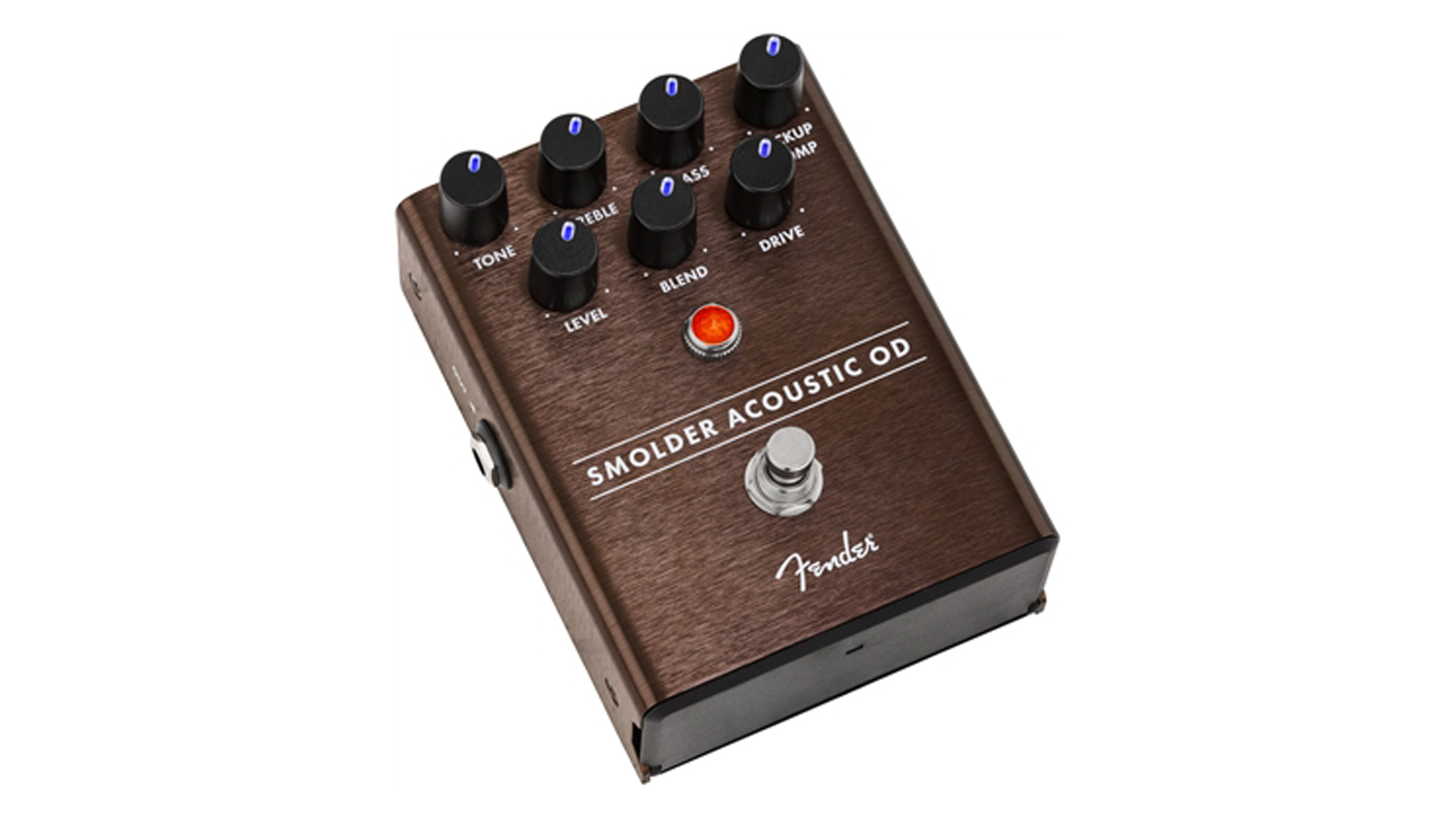
9. Fender Smolder Acoustic OD
Our expert review:
Specifications
Reasons to buy
Reasons to avoid
There are many valid reasons why you may never want an overdrive pedal anywhere near your acoustic guitar. But, if that pedal is a Smolder OD, then there are plenty of good reasons why you should.
Play a piezo pup, which has a lot of top and bottom end, through most overdrive pedals and all you'll get is a lot of woofy bass and high frequency fizz. It'll sound pretty awful. Fender has overcome this issue by equipping the Smolder OD with a specially developed circuit that reshapes a piezo's tone to sound more like a magnetic pickup. In addition, it has armed this box with a pickup compensator control to remove a lot of that characteristic piezo harshness.
Still, even if it doesn't sound dreadful, why on earth would you want to play your acoustic through an overdrive? If you're performing a long set with multiple songs, then it can be a good idea to change up gear occasionally. After all, mimicking a driven electric guitar can elevate choruses and solos to a new level.
However, we think the Smolder OD is best used as a tone-shaping blues demon. Dial in a moderately saturated tone – one that's just breaking up – then use the blend control to influence the dry signal with a touch of wet. The original tone of your guitar will still shine through, but when you dig in you'll hear a gritty, saturated edge. The resulting sound is reminiscent of a vintage low-fi recorded blues tone from the ’30s or ’40s. It's just wonderful.
Read our full Fender Smolder Acoustic OD review
Best acoustic guitar pedals: Buying advice
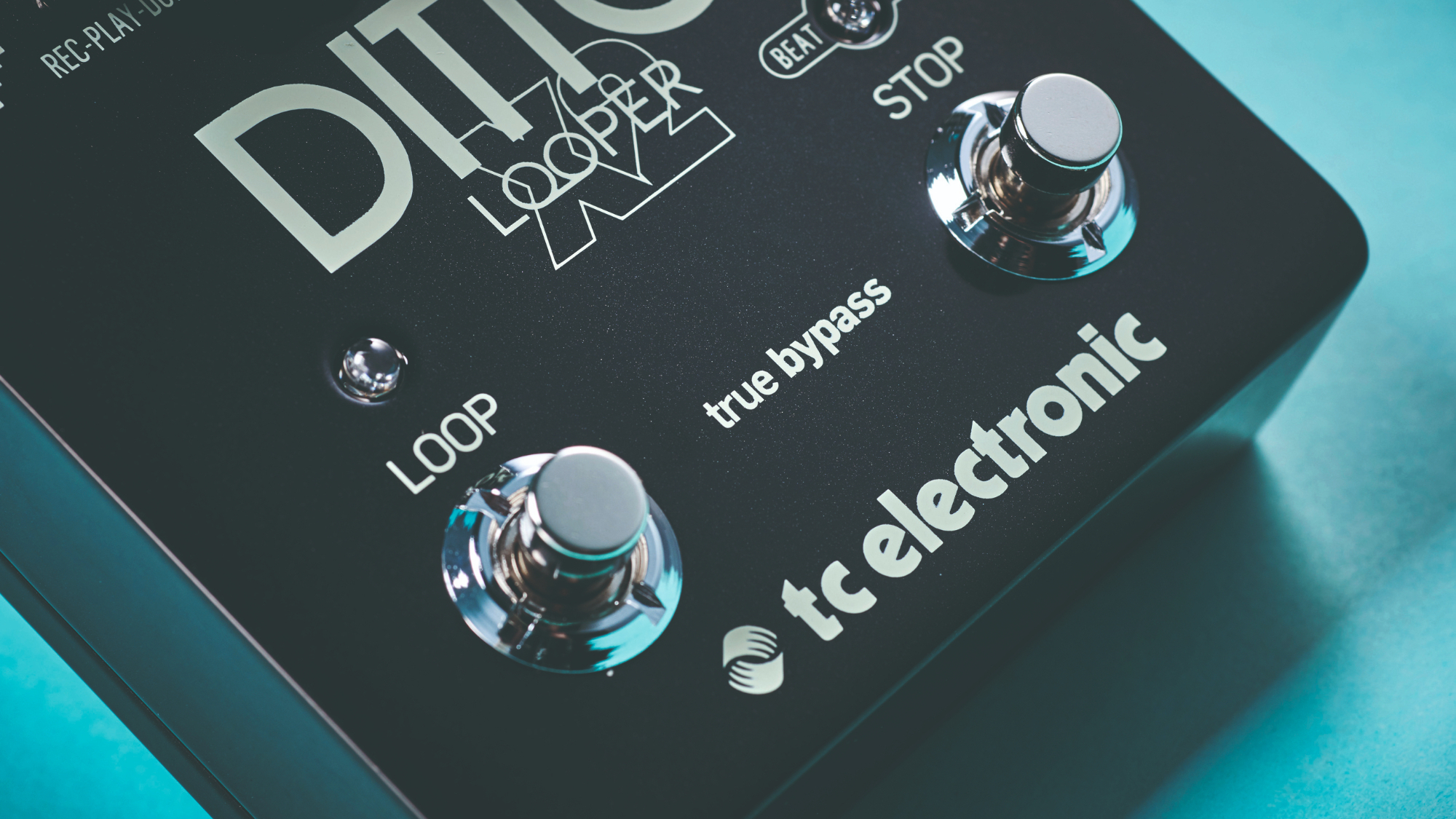
Finding the best acoustic guitar pedal for you
You can trust Guitar World
When we think of effects we tend to picture vast pedalboards at the feet of electric guitar-wielding rock gods. However, pedals are just as valid for us acoustic guitar players. In fact, we'd go as far as to say that those designed to fix feedback and other live performance issues are an absolute must.
Many pedals originally developed for electric guitar work perfectly with acoustics, but some effects, such as overdrive, benefit from a more empathetic voicing. Fortunately, more and more brands are only too pleased to build pedals specifically voiced for acoustic guitar and we applaud that.
Generally speaking, acoustic guitar pedals fall into two camps. Pedals that provide essentia – and we don't use that word lightly – tone-shaping tools, and effects pedals that alter your tone for creative effect. Let's take a look at some examples now…
Tone shaping/correcting/fixing
Amplifying an acoustic guitar is fraught with issues – thin, lacklustre sound, feedback and so on – but many, if not all, of these problems can easily be fixed with certain pedals. Here's a quick rundown of the most common kinds you'll encounter and what they do:
DI boxes/pedals
DI (which stands for Direct Injection or Direct Input) boxes are used to overcome impedance mismatches and incompatibilities. Electric guitars, including basses and pickup-equipped acoustics, produce very high-impedance signals, while mixing desks are designed to receive low-impedance line input signals.
In simple terms, and slightly counterintuitively, a high-impedance signal is very weak but we’re plugging it into kit that's expecting something with a lot more oomph. This kind of mismatch can throw up several problems, including loss of volume, loss of high-end frequencies and loss of clarity. Long cable runs, common on large stages, can also suffer from hiss.
A DI box remedies this by taking the high-impedance signal from your acoustic, via a standard ¼" input, and converting it to the kind of low-impedance signal that the mixer is expecting. Output from the DI to the mixer will be over balanced XLR cables. Volume and tone are restored, and hiss is banished.
A DI is a nifty piece of kit but we recommend buying one combined with a preamp for the ultimate tone-shaping, noise-reducing and feedback-eliminating device.
Preamps
A preamp covers similar ground to a DI, in that it’s used to raise the signal strength of your passive guitar pickup so that it’s more compatible with a mixer or PA. That's why you'll find many preamps advertised as Preamp/DIs or even Active DIs. Just like DIs, most will boast balanced XLR outputs.
However, preamps are rarely one-trick ponies, with most featuring extensive EQ controls too. EQ is useful for re-shaping the tone of a nasally sounding piezo pickup, and for dialling out bass frequencies that may be inducing feedback, which is a common issue with amplified acoustics. To this end, a preamp may also have a notch filter and a phase switch.
Some preamps allow for more creative routing, splitting and sending your signal path to multiple stage amps, mixers, recorders, PAs and so on.
EQ
We can't stress enough just how beneficial EQ controls are for acoustic guitar players. Acoustic guitar pickups – piezo or magnetic – have the impossible task of trying to replicate the sound of an acoustic. Acoustics sound as good as they do because our ears are hearing sound waves emitted from the entire soundbox of the guitar.
In contrast, piezo pups are picking up vibrations from a limited part of the guitar's top and/or bridge, and magnetic pickups are really just influenced by the strings. So, a lot of the natural richness of your unplugged tone will be missing.
EQ controls enable you to remove any offending frequencies with precision, while putting the good stuff back in. To an extent, EQ and preamp pedals perform some of the same duties. Instead of buying both, invest in a good preamp with decent EQ capabilities.

Pedals for creative effect
These effects can alter your tone subtly, or change it dramatically. Most acoustic guitarists use them with delicacy to thicken-up or enrich their live sound, often in an effort to bring character to synthetic-sounding piezo pickups.
However, if you're playing long sets with an acoustic, adding a dramatic effect can add some much-needed interest to your performance. Does your audience really want to listen to the same guitar tone all evening? In all honesty, probably not. Kicking in a layer of effects for a chorus or solo can supercharge your stage presence.
Reverb
We've all heard reverb, it occurs naturally in any space where there are surfaces for sound waves to reflect off. Closely related to Echo and Delay, this effect is produced when those reflections are tightly spaced. They hit our ears very shortly after the original sound and, because they are so close together, our brains register them as a single sound.
The larger the space, the longer it takes the reflections to reach our ears, and the less intense they become. That's why a small room sounds very different to a concert hall.
Reverb pedals may offer a variety of sonic flavours. Hall, Chamber and Room are pretty self-explanatory. They're usually added to guitar tones to make them more naturally airy.
Plate reverb sounds less room-like, instead brighter, shimmering and dense. Spring reverb sounds, well, springy, bouncy and much darker. Both Plate and Spring are often used to add character to a sound.
Delay
Where reverb relies on sound reflections that are tightly spaced, delay needs them to be, well, delayed. Space signals out by about 30 milliseconds or more and our brain begins to hear them as separate sounds, unlike reverb, which we sense as one continuous sound.
This means that delay is usually used to repeat notes for creative effect, rather than for mimicking room ambiance. However, that's underselling delay by some margin. There are many, many different types of delay available including digital, tape, reverse, dual and much more.
Sophisticated pedals, such as the Boss DD-500 or Strymon Timeline, feature many of these variations, enabling them to achieve anything from subtle rhythmic repeats to huge walls of lush ambient texture. Marry a delay with a looper for hours of joyful noodling.
Tremolo
Tremolo is a modulation effect that changes the amplitude (volume) of your guitar over time. Think of Duane Eddy, playing his tremolo-soaked, twangy-style Gretsch, in the late ’50s and you'll get the picture.
Don't worry, we're not suggesting you go full-out Duane with your Martin anytime soon. Instead try dialling in a really slow, smooth tremolo to add more depth and body to your amplified sound.
Tremolo is often confused with vibrato because Fender used the two words interchangeably for decades. Instead of changing volume, vibrato is an effect that changes pitch over time. The two effects sound completely different, but both are worth experimenting with.
Chorus
Chorus works by converging two or more almost identical sounds that differ only in a slight variation in pitch. Our brains process the resulting sound as a subtle spread of instruments or voices, much like a choir. Chorus is loved by acoustic guitarists for its rich shimmering quality.
Phaser
As the name suggests, a phaser is the sound of two identical signals moving in and out of phase over time. This continuously cancels out and reintroduces various frequencies, giving a whooshing effect – at extreme settings it can sound like a screaming jet engine passing overhead.
More subtle settings will, once again, thicken up your amplified sound, but this time with smooth, ethereal, ambient swirl and whirl. It's not an effect you'll want to overuse, but it will add a cool dimension to your sound if used sparingly. Flangers work in a similar way to Phasers, so give this effect a try too.

Overdrive
If there's one effect that brings out the haters, it's overdrive. And for good reason too: done badly it can sound dreadful. Saturating an acoustic guitar tone can make the bottom end muddy and the high end fizz – not a good start.
That's why a pedal like Fender's Smolder OD is a revelation. It's voiced specially for the acoustic guitar, so the murk and fizzle has been filtered out. You can also blend the wet and dry signals, which enables you to retain your original tone but with an added saturated edge – amazing for low-fi vintage blues tones.
Good overdrive pedals will also enable you to simulate electric guitar tones on your acoustic to add interest for choruses and other upbeat sections of your performance.
Compression
Nothing divides opinion among acoustic players more than compression. Some players claim a compressor is a vital bit of kit, sorely needed to bring out the very best in your playing. Others warn it's going to kill your dynamics stone dead. Both camps make valid points.
Essentially, a compressor is used to compress your sound's dynamic range, making the loud bits sound quieter and the quiet bits sound louder. In the right hands, this can even out your sound, increase sustain, add depth to the midrange, bring out sparkle in the top end and make your playing sound more articulate.
However, too much squeeze will rob your playing of all its dynamics, which is the combination of purposefully soft and loud notes to add interest, character and emotion to a piece. So, go careful. Compressor pedals can be used as a boost too.
Looper
A looper does what it says on the tin: it loops previously played sections of your performance enabling you to play a new part on top. For example, you can lay down a groove, loop it and then improvise over the top.
Virtuoso guitarists use loopers to mimic the sound of multiple guitars to build layer upon layer of luxuriant ambient texture. The looper pedal is not an effect as such, but it's one of the very best to use for dramatic effect.
For loopy inspiration Ed Sheeran's playing springs to mind, but also take a gander at KT Tunstall (Black Horse and the Cherry Tree is classic looper fodder), Robert Fripp and Philip Keaggy.
If you're just starting out as a guitarist, a Looper pedal should be close to the top of your shopping list because they make incredibly useful practice tools. They're brilliant for building strong timing and improv skills.
Related buyer's guides
- Supercharge your sound with the best guitar tuners around
- Or one of the best clip-on guitar tuners
- Get started with the best acoustic guitars for beginners
- On a budget? These are the best acoustic guitars under $500
- The best classical guitars: nylon-string guitars for every budget
- Plug in and play loud with of the best acoustic guitar amps
Get The Pick Newsletter
All the latest guitar news, interviews, lessons, reviews, deals and more, direct to your inbox!
After spending a decade in music retail, I’m now a freelance writer for Guitar World, MusicRadar, Guitar Player and Reverb, specialising in electric and acoustic guitars, bass, and almost anything else you can make a tune with. When my head’s not buried in the best of modern and vintage gear, I run a small company helping musicians with songwriting, production and performance, and I play bass in an alt-rock band.
“The original Jordan Boss Tone was probably used by four out of five garage bands in the late ’60s”: Unpacking the gnarly magic of the Jordan Boss Tone – an actual guitar plug-in that delivers Dan Auerbach-approved fuzz
“This is a powerhouse of a stompbox that manages to keep things simple while offering endless inspiration”: Strymon EC-1 Single Head dTape Echo pedal review











